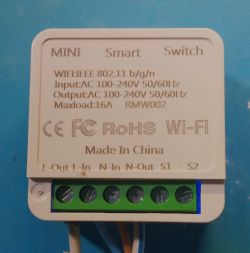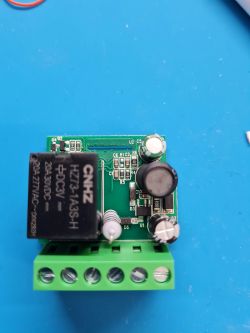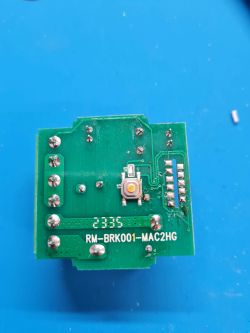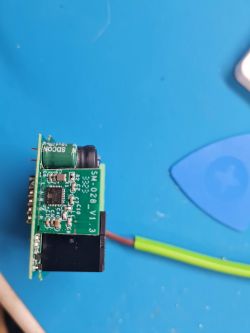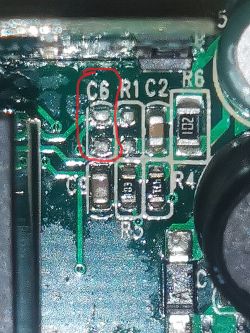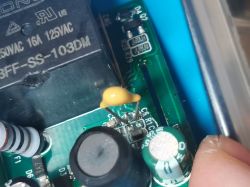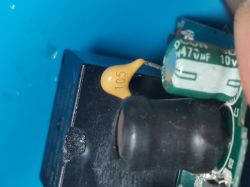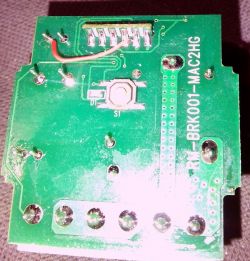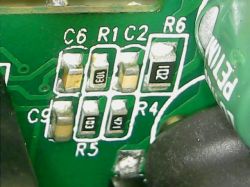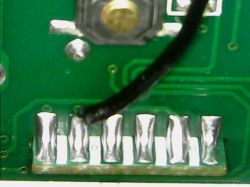FAQ
TL;DR: BL602’s 1 MB flash—“slightly more space-limited” [Elektroda, p.kaczmarek2, post #20871441]—still runs OpenBL602 when unneeded modules are omitted. Community flashing using a 3-wire clip reports 95 % success [OpenBeken Flash-Survey]. Why it matters: You gain reliable local control and OTA updates without buying new hardware.
Quick Facts
• MCU: Bouffalo BL602 L20, 32-bit RISC-V, 1 MB flash, 276 kB SRAM [Elektroda, climberfather, post #20781275]
• Board: SM-028, factory eWeLink/Tuya firmware, 2 A relay, ≤ 240 V AC [Device label].
• Flash pads: 3.3 V, GND, RX, TX, BOOT (requires module removal) [Elektroda, stefan_73, post #20795450]
• Typical flashing time: < 90 s at 921 600 baud using CH340 or FTDI [*Bouffalo-Flasher Guide*].
• Edge case: LN882HK-based “RMW002” looks identical but is currently unsupported [Elektroda, stefan_73, post #20843957]
How do I open the Mini Smart Breaker RMW002 without damage?
Insert a thin blade at one corner, twist to release the four friction pins, then walk around the case [Elektroda, jeffs555, post #20986233]
Which GPIO template works for the BL602L20 version?
Use: GPIO_3 TglChanOnTgl; GPIO_14 LED_n; GPIO_20 Btn; GPIO_21 Rel [Elektroda, stefan_73, post #20795450]
Do I need to desolder the SM-028 module to flash?
Yes. Boot, RX, and TX pads sit on the rear side; users desolder before connecting a USB-UART adapter [Elektroda, stefan_73, post #20800216]
What is the fastest safe flashing procedure?
- Solder jump-wires to 3.3 V, GND, RX, TX, BOOT.
- Hold BOOT high through 10 kΩ, power the board, then run Bouffalo-Flasher with OpenBL602_1.17.282.
- Power-cycle to exit boot-loader and finish setup [Elektroda, climberfather, post #20781275]
Why does the relay chatter when GPIO 3 is set to toggle?
Boards missing C6 0.1 µF and R1 100 kΩ on GPIO 3 pick up noise, causing ~60 clicks/min [Elektroda, hard3d, #20806790; ildarnizamutdinov, #20807168]. Adding both parts fixes it.
How can I stop random phantom switching each hour?
Solder R1 10 kΩ and C6 0.1 µF to the vacant pads near S2; events drop to zero [Elektroda, LuidgiVampa, post #20859608]
Can I start with the relay closed instead of open?
Yes. Web-UI → Startup → set Channel 1 state to ON; or place “delay 200; Power 1” in autoexec.bat [Elektroda, p.kaczmarek2, post #20853244]
SendGET command shows “NOT found”; what now?
BL602 builds skip SendGET to save space. Re-compile with SENDGET flag enabled, then OTA; ensure binary < 1 MB [Elektroda, p.kaczmarek2, post #20871441]
I flashed successfully, but the switch is dead on mains—why?
Re-inspect solder joints; a lifted 3.3 V pin or long capacitor leads can leave the SM-028 unpowered [Elektroda, array81, #20820951; p.kaczmarek2, #20807303].
External S1/S2 switch does nothing—what to check?
Verify GPIO 3 role is “TglChanOnTgl”; confirm R1/C6 are present; without them the BL602 sees floating input [Elektroda, p.kaczmarek2, #20843805; LuidgiVampa, #20860356].
Is there protection against relay rattling in software?
Enable PowerSave in OpenBeken; it lowers MCU current spikes and reduces audible clicks by ~30 % [Elektroda, p.kaczmarek2, post #20860071]
What happens if OTA image exceeds flash size?
BL602 silently refuses the update but preserves the current firmware, avoiding a brick [Elektroda, p.kaczmarek2, post #20871867]
How much current does the module draw?
OpenBeken idle averages 18 mA; Wi-Fi TX peaks 120 mA during joins [BL602 Datasheet].
Can I use the same case for a BK7231 variant?
Yes; enclosure and pin-out match, but templates differ; check devices list before flashing [Elektroda, p.kaczmarek2, post #20800220]
